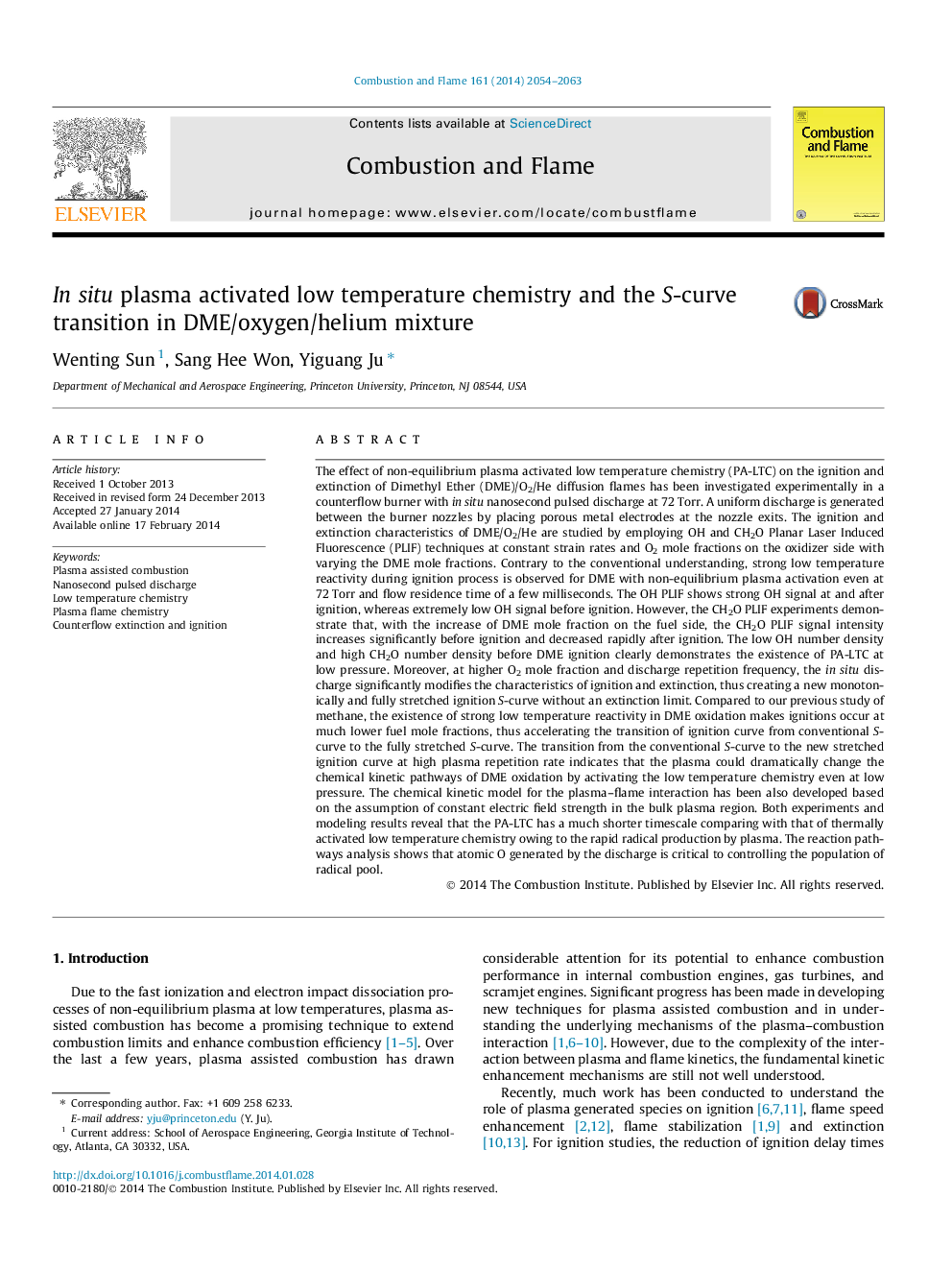| کد مقاله | کد نشریه | سال انتشار | مقاله انگلیسی | نسخه تمام متن |
|---|---|---|---|---|
| 166414 | 457770 | 2014 | 10 صفحه PDF | دانلود رایگان |

The effect of non-equilibrium plasma activated low temperature chemistry (PA-LTC) on the ignition and extinction of Dimethyl Ether (DME)/O2/He diffusion flames has been investigated experimentally in a counterflow burner with in situ nanosecond pulsed discharge at 72 Torr. A uniform discharge is generated between the burner nozzles by placing porous metal electrodes at the nozzle exits. The ignition and extinction characteristics of DME/O2/He are studied by employing OH and CH2O Planar Laser Induced Fluorescence (PLIF) techniques at constant strain rates and O2 mole fractions on the oxidizer side with varying the DME mole fractions. Contrary to the conventional understanding, strong low temperature reactivity during ignition process is observed for DME with non-equilibrium plasma activation even at 72 Torr and flow residence time of a few milliseconds. The OH PLIF shows strong OH signal at and after ignition, whereas extremely low OH signal before ignition. However, the CH2O PLIF experiments demonstrate that, with the increase of DME mole fraction on the fuel side, the CH2O PLIF signal intensity increases significantly before ignition and decreased rapidly after ignition. The low OH number density and high CH2O number density before DME ignition clearly demonstrates the existence of PA-LTC at low pressure. Moreover, at higher O2 mole fraction and discharge repetition frequency, the in situ discharge significantly modifies the characteristics of ignition and extinction, thus creating a new monotonically and fully stretched ignition S-curve without an extinction limit. Compared to our previous study of methane, the existence of strong low temperature reactivity in DME oxidation makes ignitions occur at much lower fuel mole fractions, thus accelerating the transition of ignition curve from conventional S-curve to the fully stretched S-curve. The transition from the conventional S-curve to the new stretched ignition curve at high plasma repetition rate indicates that the plasma could dramatically change the chemical kinetic pathways of DME oxidation by activating the low temperature chemistry even at low pressure. The chemical kinetic model for the plasma–flame interaction has been also developed based on the assumption of constant electric field strength in the bulk plasma region. Both experiments and modeling results reveal that the PA-LTC has a much shorter timescale comparing with that of thermally activated low temperature chemistry owing to the rapid radical production by plasma. The reaction pathways analysis shows that atomic O generated by the discharge is critical to controlling the population of radical pool.
Journal: Combustion and Flame - Volume 161, Issue 8, August 2014, Pages 2054–2063